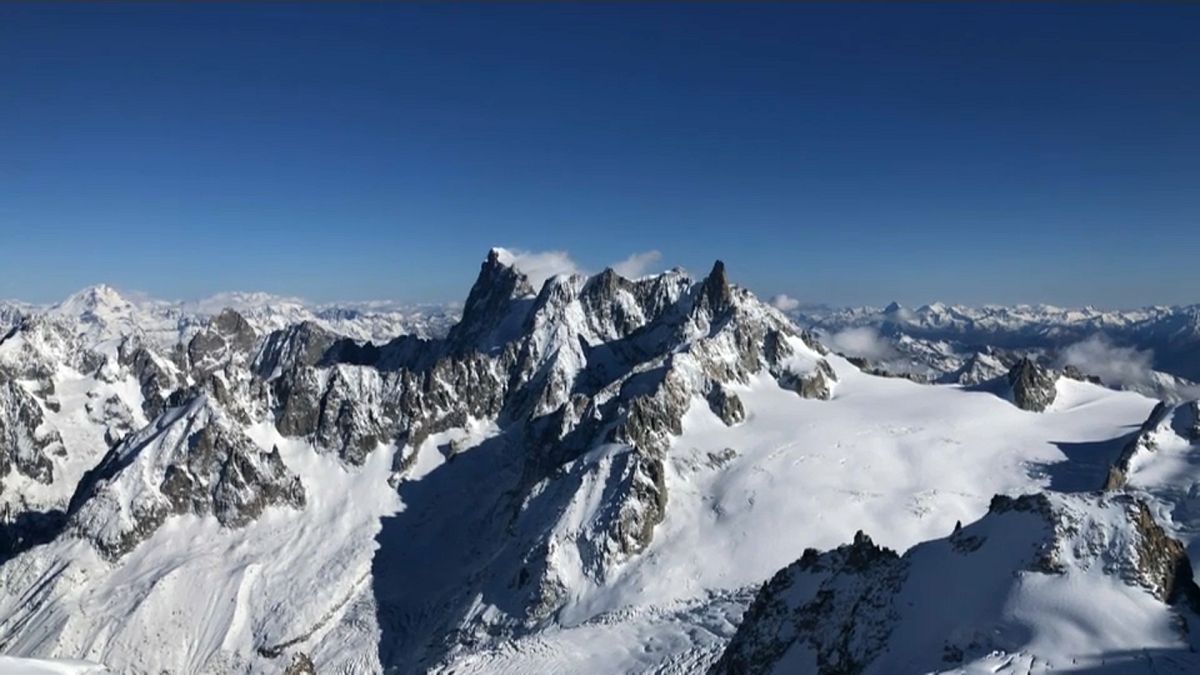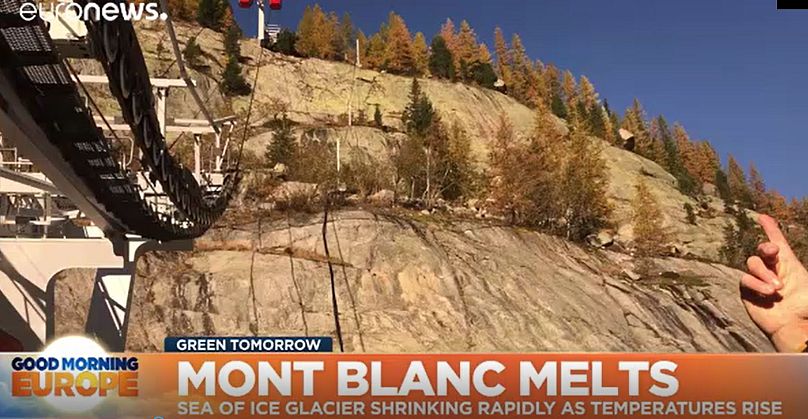Euronews visits France's largest glacier La Mer de Glace to see the effects of climate change as part of EU Green Week 2020
France's largest glacier La Mer de Glace (Sea of Ice) has survived millennia but it may be going through its last century.
Scientists say 90% of glaciers in the Alps could disappear by 2100 if nothing is done about reducing carbon emissions.
Glaciologist Luc Moreau has been observing the glacier, located on the northern slope of the Mont Blanc Massif, for 30 years. Every year, he's watched as the glacier melts a little more.
"Two hundred years ago, the summit reached the top of the polished rocks right there," Moreau said pointing to the tree line above.
Over the past 100 years, rising temperatures linked to global warming have led the Sea of Ice to retreat by about two kilometres and lose more than a quarter of its thickness.
Temperatures in the Alps have risen by more than 2°C since the middle of the 19th century — more than double the global increase.
According to scientists, the Sea of Ice will continue to shrink and could even disappear if carbon emissions are not stabilised before the end of the century.
Global warming is shrinking glaciers around the world, and the loss of these then, in turn, accelerates climate change.
"As the climate gets hotter, the more glaciers are retreating, the less we have white surfaces, which normally send back solar radiation," Ludovic Ravanel, a geomorphologist, explained. "The melting glaciers lead to more grey surfaces which accelerate the global warming process."
Some other consequences are less visible at first glance. Rising temperatures also lead to the melting of permafrost, a permanent frost described by scientists as the mountains' cement. Its loss is already destabilising rock faces, causing landslides and posing future risks for hundreds of installations in the Alps.
"It's true that over the last twenty years or so we've seen more and more damage in ski lifts and shelters, so renovations cost a lot, so it’s better to anticipate by making more impact assessments to avoid making the same mistakes we’ve made," Ravanel said.
In the Mont Blanc massif, the period of snowfall has decreased by 40 days at altitudes of under 2,500 metres since the early 1970s. These tougher conditions are changing mountaineering.
Olivier Gréber, president of the Guides of Chamonix company, stressed that "some routes have become inaccessible and it is true that when this phenomenon happens quickly it is more difficult to adapt.
"I guess we will do things differently, perhaps a little less, but I think the guide’s profession will survive," he went on.
The increase in the number of milder days could help develop off-season tourism, but with no assurance that it will cover winter losses. And the region desperately needs tourism as the sector accounts for almost a quarter of all revenue.

